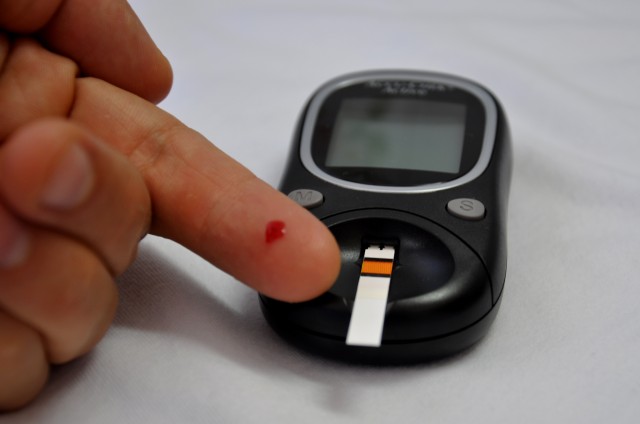
Since early this summer, KQED and our partners, KPCC and ClearHealthCosts.com, have been crowdsourcing the costs of common health care procedures.
If you're one of the 29 million people in America who has diabetes, we're turning now to you. We know that many people with diabetes must check their blood sugar, also called glucose, level several times a day.
For those of you who don't have diabetes, the reason for frequent checking is because in diabetes, sugar can build up in the bloodstream because the body is not able to process it. That can be dangerous. Depending on the severity of the disease, many people with diabetes must check their glucose level several times a day to make sure it is neither dangerously high nor dangerously low.
To check their blood sugar, people with diabetes have a glucose meter. Each time they test their blood, a test strip is inserted into the meter. Then they use a special needle to prick a finger and place a drop of blood on a test strip. The meter displays the result.
A single strip is not so much money, but testing day in, day out, the money adds up. In addition, like everything else in health care, different insurers cover different brands at different quantities and different co-pays or co-insurance.